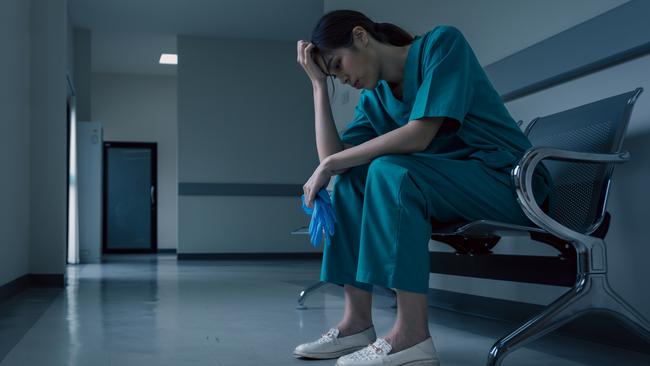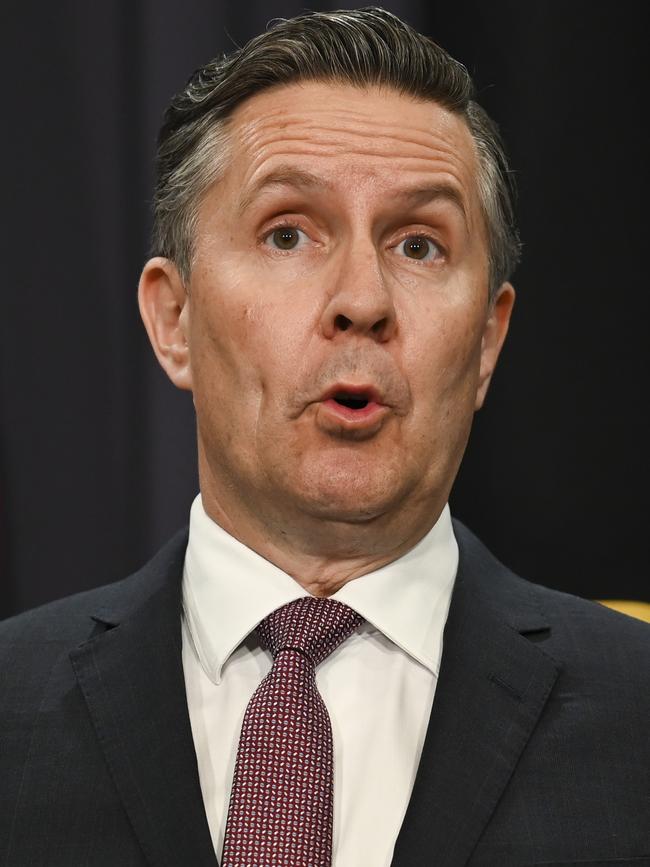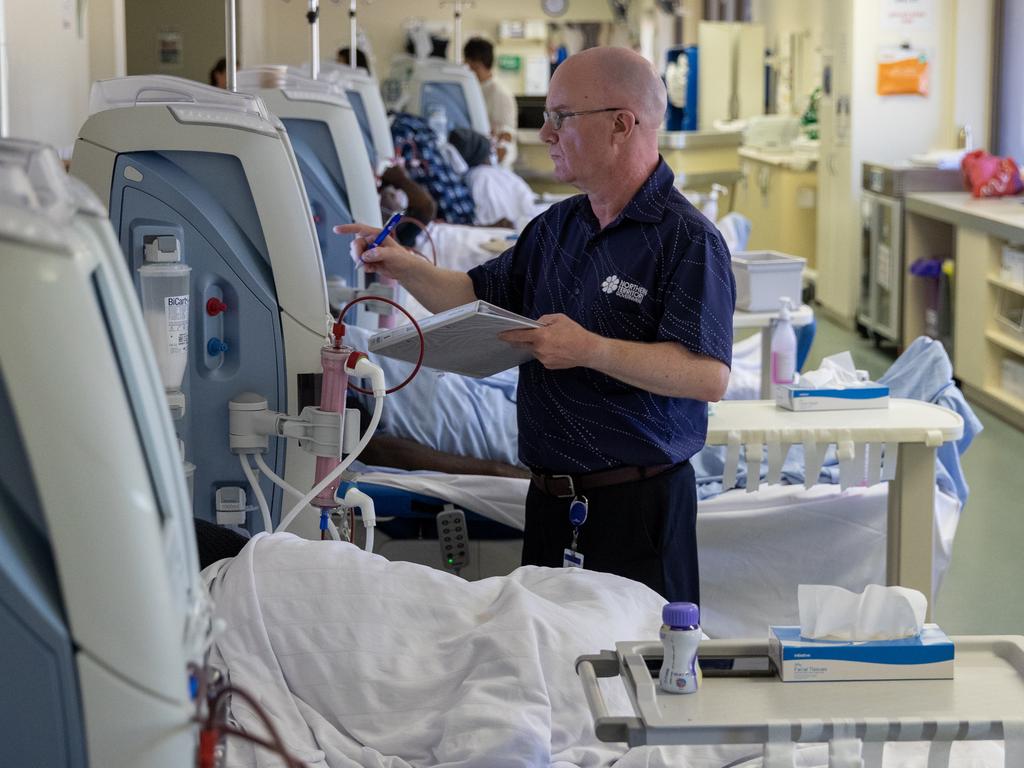Private hospital financial crisis prompt closures
The $19bn private hospital sector is in financial crisis, with skyrocketing costs fuelling concerns that more hospitals, health clinics and dental surgeries will close.

The $19bn private hospital sector is in financial crisis, with skyrocketing wages, energy, insurance and debt costs fuelling concerns that more hospitals, health clinics and dental surgeries will close, a secret high-level study has revealed.
The study, labelled commercial in confidence and worked on as late as February 27, found private hospitals’ energy and utilities bills were up 13.8 per cent compared with a year earlier, insurance was up 10-15 per cent, interest rate-driven debt costs were up 6 per cent while workforce costs were up by 3.5 to 4.5 per cent.
Sources say Health Minister Mark Butler and his department’s secretary Blair Comley were briefed on the findings of the EY report, as a critical plank of the health system comes under threat, sparking warnings millions of people could go without access to healthcare.
Mr Butler said on Sunday the sector was in a worrying financial position as he hit out at health insurers, urging them to “engage meaningfully” with hospitals to ensure they stay open.
“We are concerned about the financial viability of private hospitals, particularly those in regional areas and where they play an important role in the local community,” Mr Butler said.
The research, leaked to The Australian by industry sources, exposes how cost pressures on private hospitals are far outstripping revenue streams. Maternity services, oral surgery and mental health wards are under the most intense strain.
The study comes after Mr Butler revealed this year’s average health premium increase would be 3 per cent, further stretching the affordability of health costs for families, after out-of-pocket expenses for private medical services increased by 38 per cent in the past three years.
Australian Private Hospitals Association chief executive Michael Roff said the paper highlighted the most challenging economic time for the sector in living memory. He blamed unavoidable increases in hospital operating costs and funding from insurers not matching inflation.

Australian Medical Association president Steve Robson said the private sector was in crisis as he accused health insurers of failing to adequately reimburse hospitals for services. He called for an independent body to conduct a review of the remuneration arrangements between private health insurers and private hospitals to ensure the viability of the sector into the future.
The EY study revealed the workforce cost pressure on hospital balance sheets stemmed from wage growth, decreases in productivity and hospitals seeking to retain and attract staff.
With about two-thirds of all elective surgeries occurring in the private sector each year, experts warn further private hospital closures threaten to swamp Australia’s overwhelmed public system.
Industry sources not permitted to speak on the record said about 30 per cent of private hospitals and clinics were forecast to shut down if the government failed to act.
According to figures from the Department of Health, 71 private hospital services have closed in the past five years including 48 day hospitals, four psych hospitals and 17 overnight hospitals.
At least six private hospitals have closed in the past 16 months, heaping pressure on surrounding public hospitals, while workforce issues have forced the closure of a host of private ICU and maternity units, including at Epworth Geelong, Cairns Private Hospital and Sunnybank Private Hospital in southwest Brisbane. A further two private mental health services, run by Wesley Mission, shut their doors last week, with inpatients likely to spill into the public system or go without treatment all together.
Ahead of a roundtable next week with several medical colleges hosted by the AMA to discuss the crisis, Dr Robson said private hospitals had been forced to deprioritise less profitable procedures in favour of more profitable procedures in order to stay afloat.

Under the current system, private hospitals are funded by multiple sources including the commonwealth, private health insurance funds and out-of-pocket payments by individuals.
“We are extremely concerned about this,” Dr Robson said. “We are so anxious about the current viability crisis in the private sector. It has to be one of the highest priorities of this country. We are seeing health insurers making record profits yet the hospitals are receiving so little from insurers to perform the surgery that they are becoming unviable. We know that the public health system has hundreds of thousands of people waiting for surgeries already. There is no way the public system could cope. The stakes are unbelievably high.”
Dr Robson said maternity services and mental health and oral procedures were increasingly unprofitable while orthopaedics procedures including joint replacements attracted higher payments from insurers.
“The unviability of these services completely destroys the value proposition of private health insurance, because the biggest drivers of people taking up private health insurance are people having a baby and mental health conditions,” he said.
Mr Roff said the private health insurance industry had record profits: $2bn last financial year, up from $1bn the year before. “This insurer bounty has come at the expense of private hospitals, with payments from insurers failing to keep pace with inflation,” he said.
“The result is, as we have already seen at the end of 2023 and start of 2024, that hospitals will close or they will stop providing expensive services like maternity care. That’s lose-lose for private health insurers who are selling a product that claims to pay for these services while not supporting hospitals to deliver them,” he said.
The report found private hospitals’ revenue streams were not matching soaring operating costs, with private health insurance indexation rising about 1.5-2.5 per cent per year.
Private Healthcare Australia rebuffed the claims, saying insurers were also bearing the brunt of high inflation, which was “driving up the cost of everything health funds pay for”, and funds were spending more in cyber security and IT services to support billing and claims.
PHA chief executive Rachel David suggested hospitals should negotiate more aggressively with medical device companies, which she said charged between 30 and 100 per cent more in Australia than comparable countries. “Health funds are walking a tightrope between keeping premiums as low as possible to support members facing cost-of-living pressures, while providing adequate funding for hospitals and frontline health workers to deliver quality care,” Dr David said.
The opposition seized on the leaked report. Health and aged care spokeswoman Anne Ruston saying the cost of doing business under Labor was “getting harder especially with increased regulatory burdens”. Senator Ruston called on Mr Butler to respond to private hospital closures, warning that the health system was reliant on a strong public-private partnership.







To join the conversation, please log in. Don't have an account? Register
Join the conversation, you are commenting as Logout